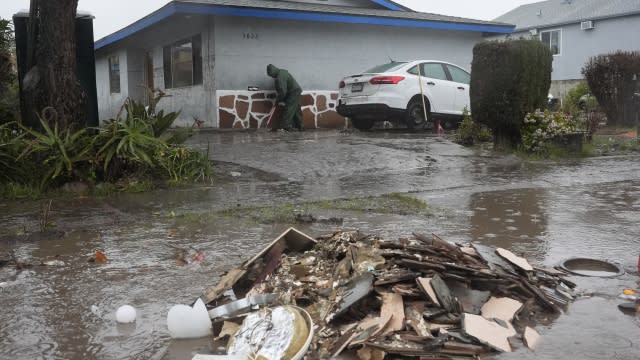Could new flood sensors help keep your basement dry?

Michael Routhier pushes past cobwebs, and slowly through the dimly lit crawl space in a home built during the 1750s, and crouches his way to the corner of the home's stone foundation.
Routhier is a researcher at the University of New Hampshire and is hoping new, state-of-the-art flood sensors installed in this historic home could help better predict flood patterns while also helping homeowners and business owners mitigate the impacts of flood events.
"You can see here there's green mold that is telling us where water sometimes usually sits," Routhier said, pointing at an inside pillar of the home's foundation.
Like many homes across the country, this particular home is equipped with a basement sump-pump. This pump, however, is specially equipped with sensors that can detect water levels, humidity levels and salinity levels. And they could help alert homeowners to flooding before floods ever occur. Each sensor costs about $2,000.
The home Routhier is studying is part of the Strawbery Banke Museum in Portsmouth, New Hampshire. It sits right at the confluence of the Piscataqua River and the Atlantic Ocean.
The whole area, like an estimated 10% of the U.S., is prone to flooding.
"Over the last 100 years, sea levels have risen a foot. As tides come up they're pushing on the water table, and that's pushing up the water table into these basements," Routhier added.
In 2023 flooding caused an estimated $2.8 billion across the country. Back in January, a severe storm surge combined with a king tide caused severe flooding across the New Hampshire and Maine coast.
"It's been bad, we had back-to-back storms," said Rodney Rowland, director of facilities and environmental sustainability for the Strawbery Banke Museum.
To help visitors better understand the impacts of flooding in the area, the museum has now created an exhibit that shows flood data in real time, alerting officials here when water starts rising in the basements of these historic homes.
"What we're doing to be able to measure this is to inform the public so they can take measures to mitigate what's happening," he said.
The ultimate goal is to help not only the museum and but the surrounding community and homeowners develop flood mitigation plans.
SEE MORE: Rare tornado warning issued for parts of Southern California
